Wisteria frutescens ‘Amethyst Falls’
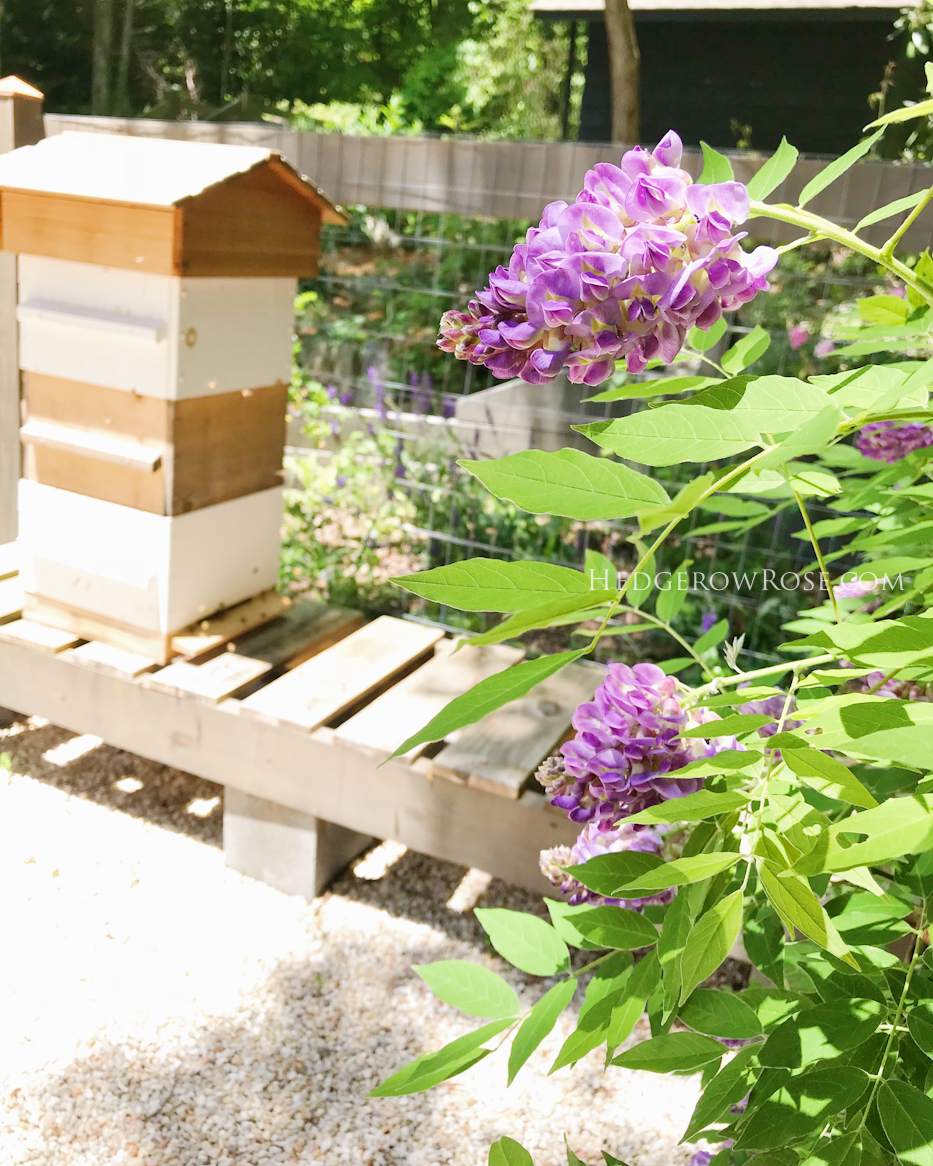
It’s often said that when you leave a new garden and start anew, you should let go of the idea that you can recreate what you once had. This is a painful pill to swallow, but it’s true. A new garden will have it’s own set of flaws and opportunities and one should be prepared to think open-mindedly about it’s design rather than trying to shoehorn in an exact replica of a former garden. (I know I’m here to talk about this Wisteria but there’s a point to this story, bear with me.)
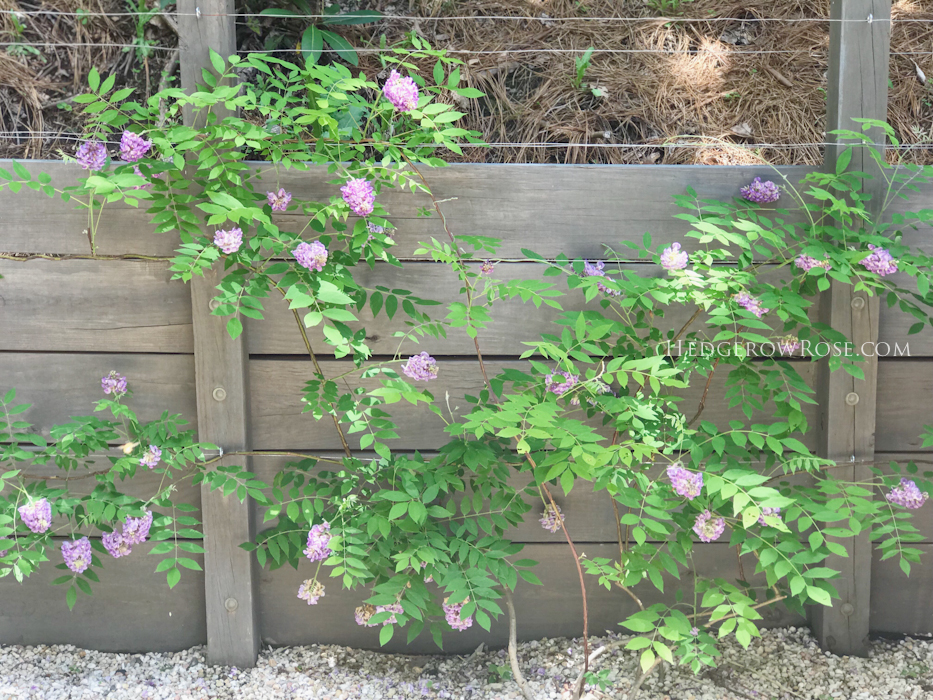
But, leaving plants behind is incredibly difficult. It feels much like saying goodbye to good friends, doesn’t it? When Jesse and I moved to North Carolina a few years ago, we left a garden in Pennsylvania that we loved….

…and now we’ve left the garden that we made in North Carolina and all those feelings come back again as we start anew. Again.
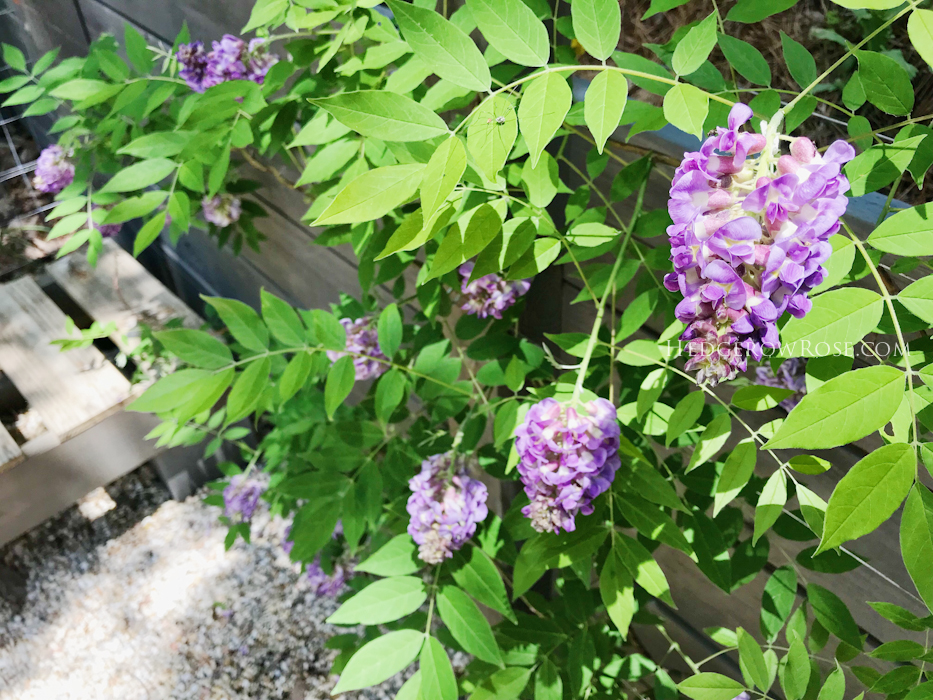
While looking out the window at this snow-covered mud pit that we’ve taken on, hatching plans for spring, I have to continue to remind myself I can’t recreate what we had and I probably wouldn’t want to anyways because let’s be real it wasn’t perfect. However, there are definitely some plants and vignettes that I want to try again and growing Wisteria frutescans ‘Amethyst Falls’ is one of them. This is not the invasive imported Wisteria that you see engulfing homes and trees. Nay, this Wisteria is a native to North America and much more polite. It can grow to large heights, eventually, but is also amenable to pruning to shape which we have done here. (Remember when we built this retaining wall?)

In these photos, our Wisteria hadn’t quite started to wrap around the sides behind the chicken coop and behind the bee hive but by the time we left it had done so and it looked spectacular. I think the new owner is going to be so pleasantly surprised when she sees it in bloom this spring. To support the vines, we used a simple wire (with those tightening thingamabobs on one end) espalier system–the same we used to support ‘The Generous Gardener’ rose by our front door. In this location, our Wisteria faced west so it didn’t get the hugest amount of sun but it still flowered so nicely and never showed any signs of disease.
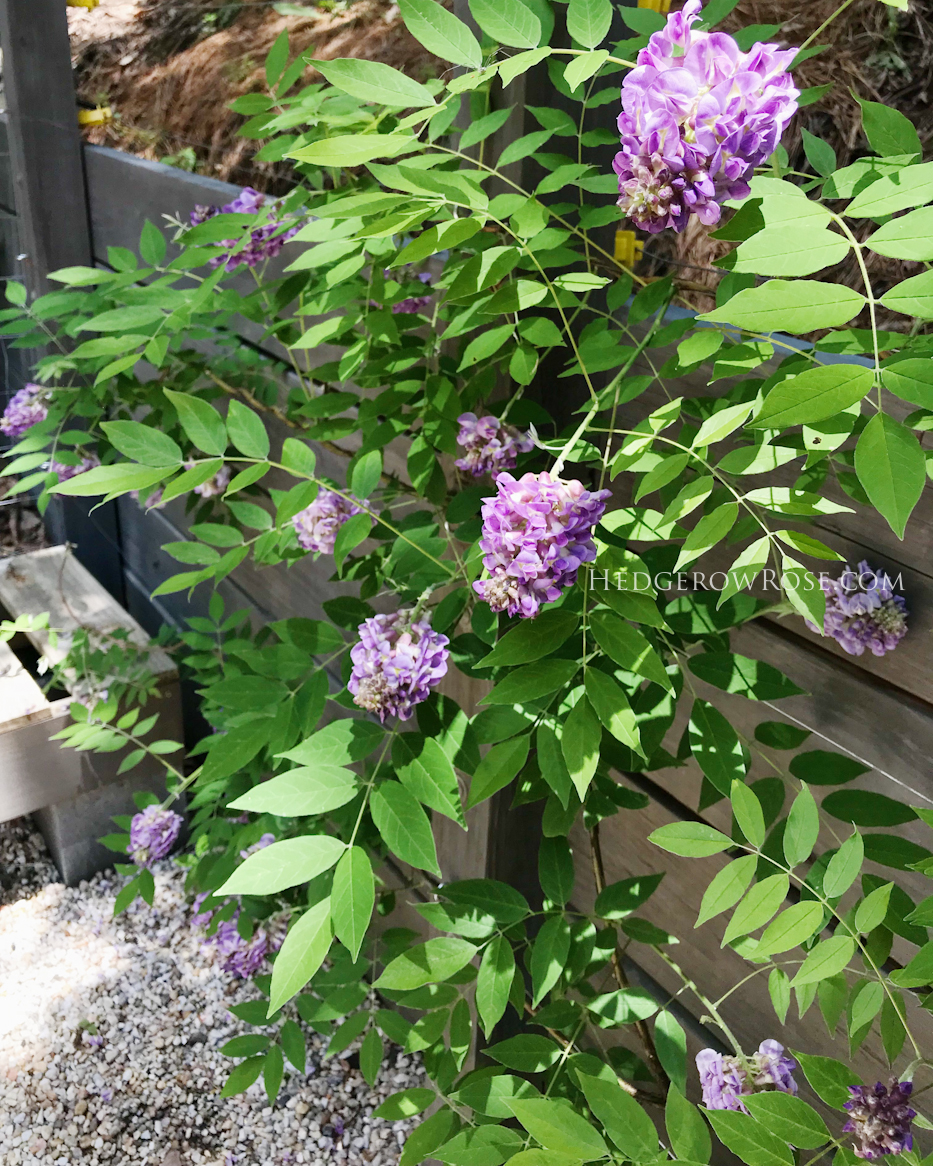
At our new garden, we have recently installed privacy fencing and my plan is to place this Wisteria against a few of the panels to soften the harshness of the new wood. I won’t be “recreating” our former garden but including some of it’s most successful elements.
What sort of plans are you making for your garden in spring? If you’re in the southern hemisphere, how has your summer garden been faring in the record-breaking heat?
By the way…Our North Carolina garden’s Wisteria frutescans ‘Amethyst Falls’ was purchased at a local nursery but for this new Pennsylvania garden I will be ordering online. White Flower Farm carries it if you want one, too!

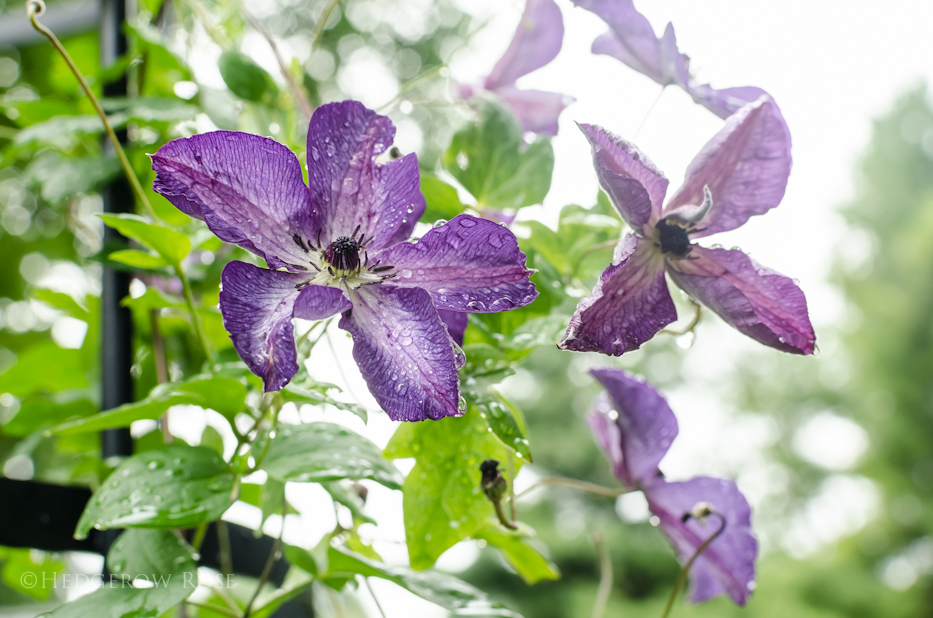
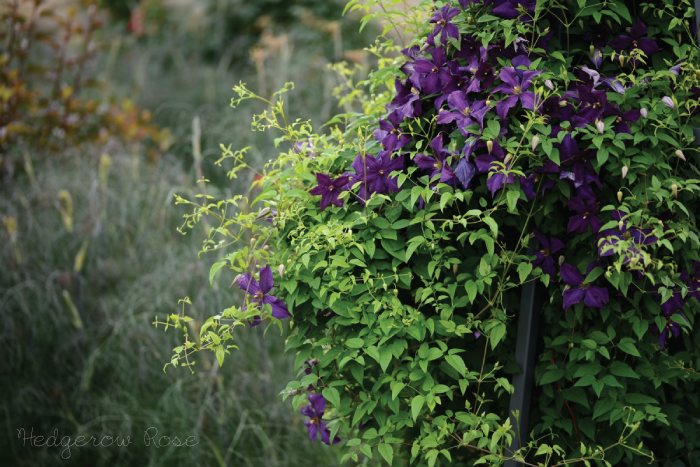
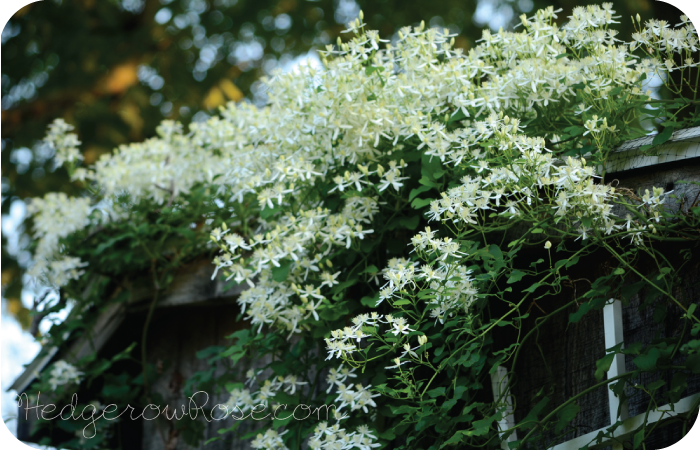
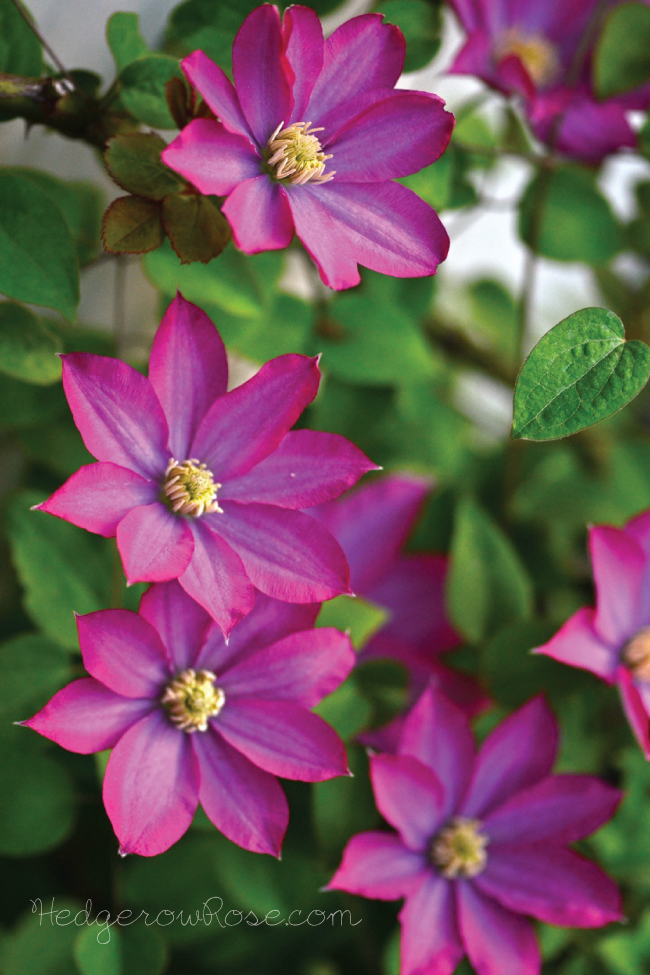
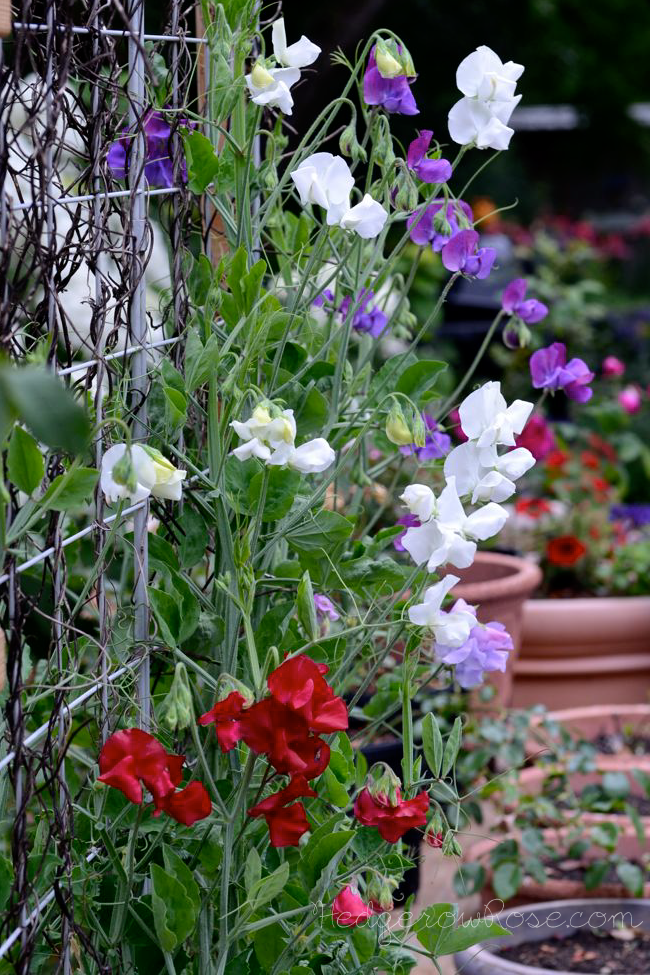
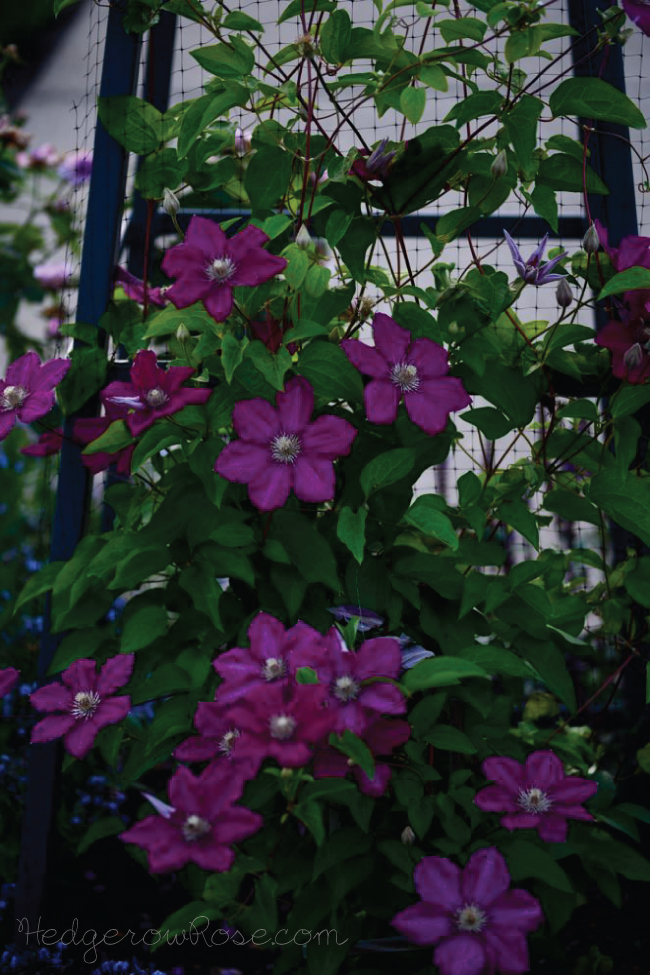
It is so hard to let go of a loved garden, but you are right, you can lift elements. It is interesting to see how the same plant behaves in a different situation. You will take your eye and your passion wherever you go, and it is those things that make your garden, Laurie. X
Thank you, Ali, that is so encouraging. I just need it to stop being winter so I can get started!
I love wisteria. The vine you gave me gives me pleasure all summer. So easy to take care of. I planted it around an arbor so have to trim it back every fall, but I love standing under it when it’s in bloom.
If I were to assign a specific flower to you it would be Wisteria! They always remind me of you and our old house in Mira Mesa.
So beautiful! I’ve always been afraid of wisteria, but this gives me hope! Do you know of a good tutorial on how to set up wires to train on? I’ve seen it used on brick and wood but never could quite figure out how to do it.
Loved the NC garden and all the tips and this latest series and keep coming back for more. Thanks for posting!
Thanks Eve!
I’ve never used a tutorial…we sort of just winged it. My husband used 6 inch eyehooks (you can even go bigger so you have more airspace between the wall but don’t do less), with galvanized wire stretched between and then on one end we attached “eye and hook” tension turnbuckles so that the wire could be tightened as needed. I plan on installing a few more of these this spring in the new garden and I will make sure to take some pics to share!
Awesome, thank you!!